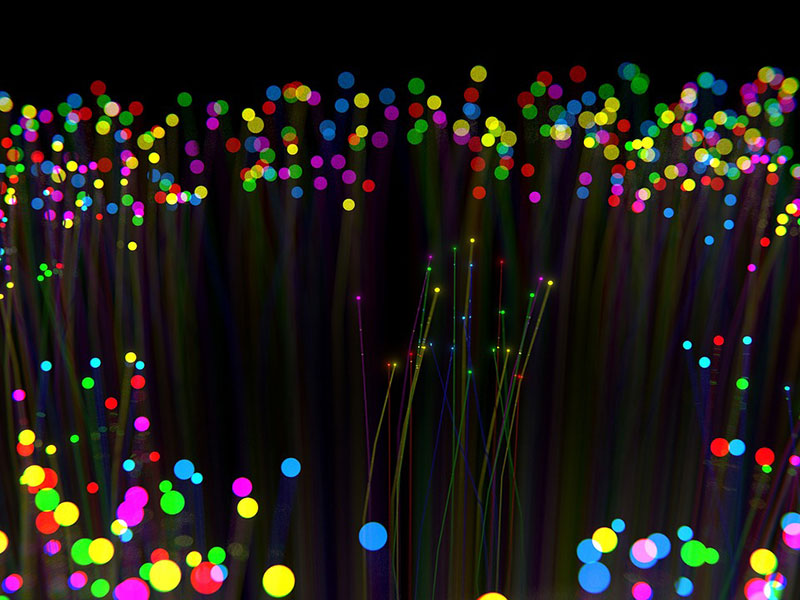Fiber optics is the science of transmitting data over long, thin, strands of extremely pure silica glass about the size of a human hair. Most people refer to optical cables as simply fiber optics . However, there is a wide range of products that utilize fiber optical technology. Even video signal extenders including HDMI, DisplayPort and DVI utilize fiber optic technology. Fiber optic cables themselves are made up of a glass core, cladding, and buffer coating. The glass core carries light impulses transmitted by an LED or laser, the infrared light travels through the “hair” like fibers at blistering speeds; as it reaches the other side, an optical receiver converts the light impulses back into electrical signals.
Modern communication systems consist of optical transceivers at the transmitting and receiving ends, optical fibers to route the signal and optical amplifiers. Optical fibers are used in a wide range of industries today especially in telecommunications, data centers, computer networking, medicine, and defense. These industries demand extremely high bandwidths to be transmitted over substantial distances and fiber optics provides a clear advantage over traditional copper. Advantages of fiber optics include high bandwidth capacity, immunity to electromagnetic/electrical interferences, low loss over long distances, and security.
Fiber optics Data & Speed
One of the most prominent benefits of fiber technology is its ability to transfer an incredible amount of data as opposed to traditional copper cabling. This allows for overall savings and reduced cabling while simultaneously allowing enhanced system integration with fewer connections. In terms of bandwidth fiber optic cables are not only faster and can travel further but it can carry more than a thousand times the bandwidth as compared to copper.
Distance
A clear advantage of fiber over copper cabling is fiber’s ability to carry transmissions great distances with minimal or no loss of signal and quality. Multimode fiber can run transmissions as far as 2 kilometers, single mode can cover distances of over 40 kilometers. Compare this to traditional copper which usually cannot exceed 100 meters and is burdened with heavy losses coupled with poor quality.
Safety
Fiber optic technology is also known for its safety. Whether protecting against electrical interferences or more serious security threats, fiber optic cabling surpasses copper with ease. Unlike copper which is a metal, fiber optic cabling is non-conductive, protecting it against interferences such as EMI, RFI, lightning strikes, ground loops, electrical noise etc. In terms of more serious security threats, fiber users rest at ease knowing that fiber optic cables cannot be tapped.




Hi, this is a comment.
To get started with moderating, editing, and deleting comments, please visit the Comments screen in the dashboard.
Commenter avatars come from Gravatar.